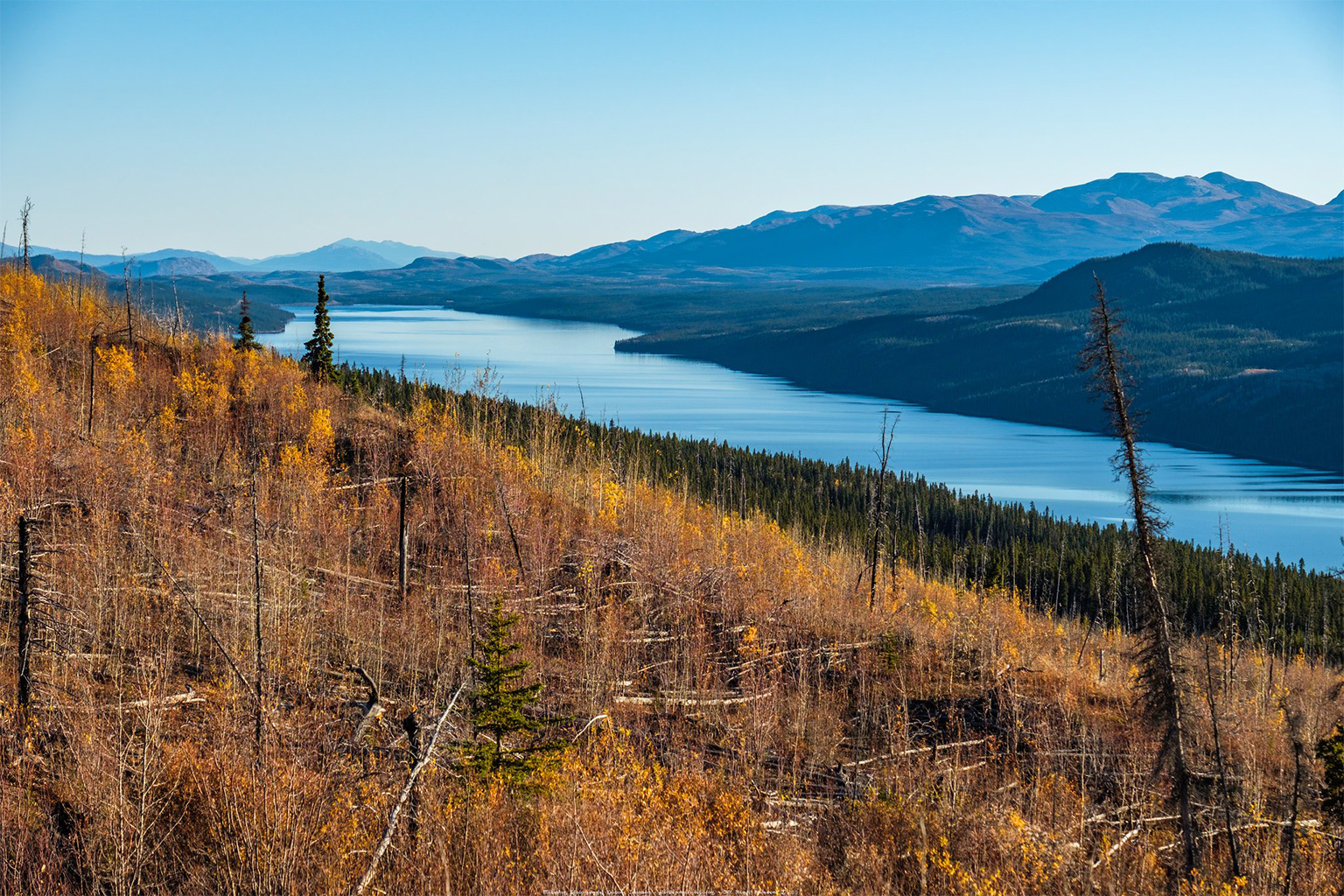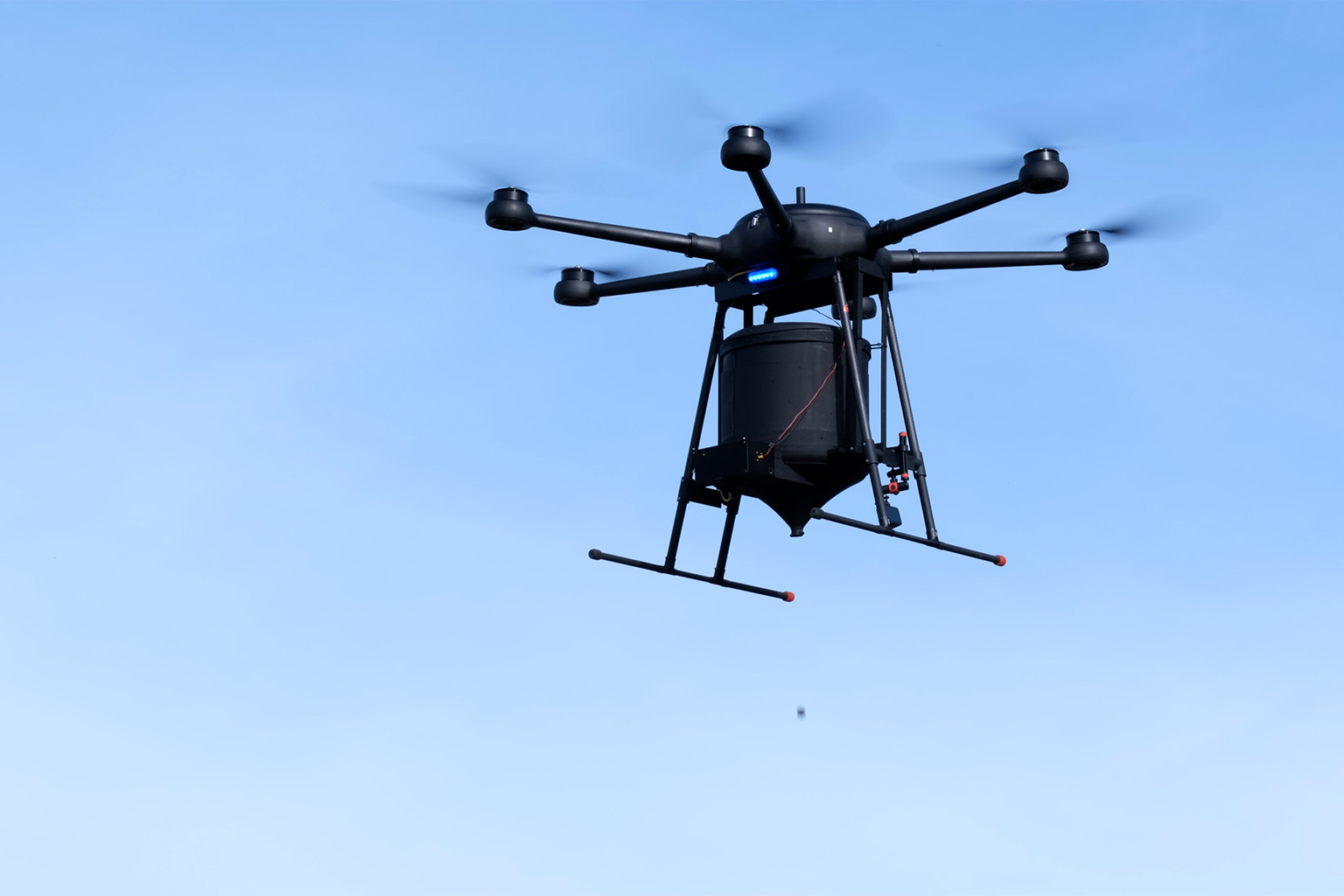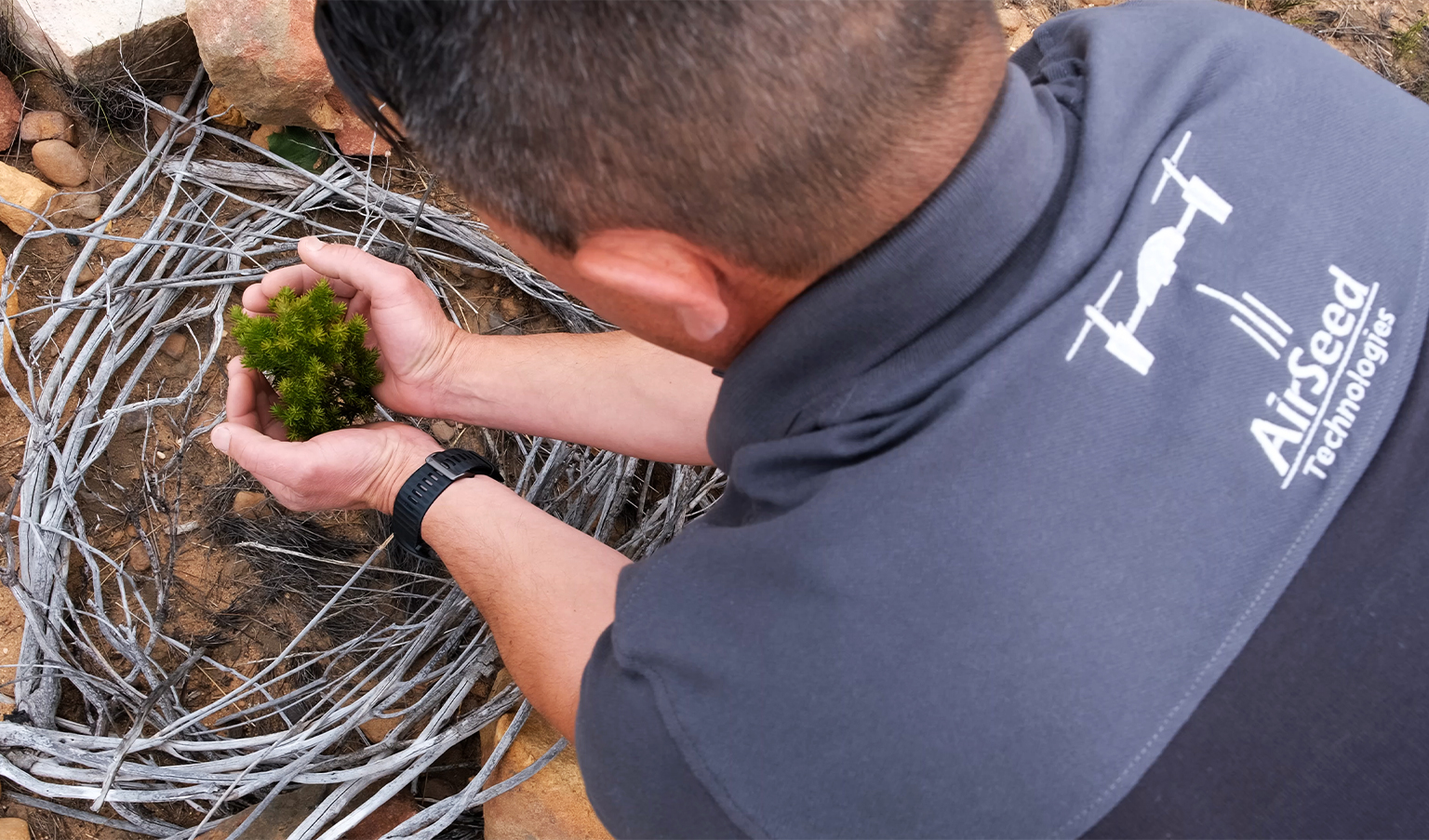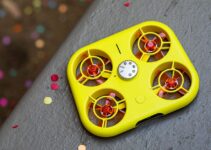- This four-part Mongabay mini-series examines the latest technological solutions to help tree-planting projects achieve scale and long-term efficiency. Using these innovative approaches could be vital for meeting international targets to repair degraded ecosystems, sequester carbon, and restore biodiversity.
- Restoring hundreds of millions of hectares of lost and degraded forest worldwide will require a gigantic effort, a challenge made doubly hard by the fact that many sites are inaccessible by road, stopping manual replanting projects in their tracks.
- Manual planting is labor-intensive and slow. Drone seeding uses the latest in robotic technology to deliver seeds directly to where they’re needed. Drones can drop seeds along a predefined route, working together in a “swarm” to complete the task with a single human supervisor overseeing the process.
- Drone-dropped seed success rates are lower than for manually planted seedlings, but biotech solutions are helping. Specially designed pods encase the seeds in a tailored mix of nutrients to help them thrive. Drones are tech-intensive, and still available mostly in industrialized countries, but could one day help reseed forests worldwide.
This story is the third article of a four-part Mongabay mini-series exploring the latest technological solutions to support reforestation. Read Part One, Part Two and Part Four.
Vast tracts of forest have been cleared by logging, degraded by a range of other human activities, consumed by wildfires, and ravaged by invasive insects. Restoring these forests is crucial to curbing global climate change and bringing wild species back from the brink of extinction. But the scale of the challenge before us is huge and time is short.
Although some forests can recover naturally with the right protection and support, others need more intensive help in the form of replanting. This need has spawned heavily promoted tree-planting projects that tackle the challenge manually, sending thousands of volunteers into the field to plant saplings by hand, one by one.
While these efforts are inspirational, they’re also labor-intensive and cumbersome to organize, and can’t reach degraded land that’s inaccessible by road or where volunteers are few. More importantly, they can’t achieve reforestation at the planetwide scales or timeframe needed to address the climate and biodiversity crises and meet international reforestation targets.
Clearly, whatever methods humanity settles on to restore millions of hectares of lost and degraded forest in the 21st century, it will require a herculean effort. But lacking Hercules, it looks like robots may be up to the job.

Drone-seeding companies lead the way
Aerial drone seeding using the latest in robotic technology — delivering seeds directly to sites where they’re needed — is a high-tech solution that’s gaining momentum.
Early designs required that each seed drone be remote controlled by an experienced drone pilot. Newer drones can autonomously drop seeds along a predefined route and work together in a “swarm” guided by a single human supervisor. This advance in artificial intelligence is a gamechanger for reforesting remote and inaccessible sites.
Aerial seeding companies — some designing proprietary versions of aerial robotic technology, others adapting commercially available designs — are popping up in industrialized nations, though the use of seeding drones has yet to really take hold in the tropics and elsewhere in the developing world.
Mast Reforestation, a firm based in Seattle, Washington, is focusing its drone-seeding program on North America’s fire-ravaged conifer forests. Each large-scale wildfire is “such a massive step backwards,” says Mast’s vice president of research and development, Matthew Aghai. And “we still don’t have scalable tools to address them.” Mast sees itself as part of that upscaling process.
When the company was founded in 2015, then called DroneSeed, there were no commercially available drones suitable for the job. So the firm created its own drone design. “We built custom-made aircraft that are enormous,” Aghai recalls. In fact, they were so big and sophisticated in their design that the company needed to partner with the U.S. Federal Aviation Administration to develop regulations to ensure drone-seeding operations ran smoothly and safely.
In 2022, Mast Reforestation combined drone seeding and hand planting of seedlings in the Henry Creek reforestation project, which reforested roughly 121 hectares (300 acres) in western Oregon, U.S. The company predicts the project will remove more than 200,000 metric tons of carbon from the atmosphere over the next 200 years.

In Australia, AirSeed Technologies is aiming to restore natural forests cleared by logging, wildfires and flooding. “There is an enormous amount of land in Australia that is ripe for restoration,” says Charlotte Mills, chief ecologist at AirSeed. However, “standard [manual] approaches are insufficient to meet the challenge of scale.”
The company has developed specialized seeding drones equipped with artificial intelligence capabilities to speed up and scale up the reforestation process. AirSeed’s drones can plant seeds 25 times faster than manually planting seedlings, dropping up to 40,000 seed pods a day in remote, hazardous, inaccessible areas. The company’s goal is to drop 100 million seed pods a year by 2024.
AirSeed recently collaborated with Australia’s MidCoast Council to restore koala habitat lost to bushfires in the Cattai wetlands, New South Wales. Using their podding drones, they dropped seeds for swamp mahogany, an important native food plant for these vulnerable marsupials. They’re also piloting their technology to regenerate flood-damaged forests in Lismore, New South Wales.
Companies and NGOs around the world are using drone seeding to reforest degraded land. U.K.-based environmental technology company Dendra Systems uses drones to drop seeds faster and more safely in remote areas. Recently, it partnered with WWF-Australia, the Australian government and the Turner Family Foundation to reforest more than 20,000 hectares (nearly 50,000 acres) of degraded forests in Australia.
In Africa, World Vision Kenya, in partnership with Kenya Flying Labs, is using drones to reseed degraded land in Tana River county with indigenous trees. Drone-reforestation company Seedcopter is pioneering drone seeding to restore India’s forests, and in Canada, Flashforest is using drones to restore forests ravaged by wildfire. Spanish not-for-profit Dronecoria produces open-source forestry technology, including seeding drones and seed-coating machines.

Streamlining the reforestation pipeline
Aerial seeding efforts are still in their early days, but some entrepreneurs hope that drones will revolutionize reforestation efforts. Researchers and companies have already made huge strides in making these robotic technologies more effective and cost-efficient, but there are daunting challenges to scaling these operations up further.
Major logistics and infrastructure issues especially need to be addressed. For any tree-planting project, but especially for aerial seeding projects that have to overcome low germination rates, sources must be found or created for large tonnages of seeds coming from diverse native species. That’s just the first step in a lengthy, complex reforestation supply chain. Seeds, once collected, need to be stored properly, then transported to the launch point undamaged.
Seed availability remains a major roadblock to large-scale reforestation, whether by drone seeding or by hand planting of seedlings. “Seed is a limited resource; it is best to use it conservatively,” explains Mills.
Huge volumes of seeds are required to reforest at scale. Estimates suggest that to reforest around 10 million hectares (roughly 25 million acres) of lost and degraded forest in the U.S. West would require between 8 billion and 45 billion seeds. Across the U.S., private and public seed banks designated for general reforestation have, “about three to five years of seed before we run out,” Aghai says.
He emphasizes the key role that collecting quality seeds on a massive scale needs to play in a global reforestation effort: “It all starts with seed, because that’s your genetic material,” Aghai notes.
While building out a well-developed seed supply chain is vital for large-scale drone planting, so is the careful preparation of reforestation sites. Once a planting location is selected, Australia’s AirSeed team visits the site to map the terrain, determine soil quality and existing vegetation, and capture high-resolution aerial landscape images, all of which helps the company develop a replanting plan. “This initial mapping imagery is crucial for planning our planting missions,” Mills notes.


Ingredients for success
Seed for seed, robots still aren’t as effective as an enthusiastic volunteer with a shovel. The success rate of seeds dropped by drones, or other aerial vehicles, is much lower than for seedlings planted manually.
“One of the big challenges [for aerial seeding] is the low germination rate,” says Lining Yao, a mechanical engineer at Carnegie Mellon University. A poor germination rate can result from many factors, including seeds falling on poor soils, predation by birds and insects, and improper seed storage or handling prior to planting.
Another big challenge: the need to simultaneously disperse seeds from a wide variety of plant species to achieve a more natural biodiverse forest. “Creating [aerial seeding] designs that can plant across the spectrum of seed types is a huge challenge,” Mills explains. There is “a huge amount of variation in the size, shape, mass and external features of the seed these plants produce.” Many types of seeds need to be brought together in advance of planting, and each species likely has different handling requirements.
Preplanting seed logistics also make drone seeding difficult, because many seeds have specific, and sometimes complex, dormancy requirements for achieving successful germination. For example, many temperate-climate plants produce seed that drops from the tree in autumn and overwinter before germinating in spring.
To simulate these natural conditions, drone-seeding companies, scientists and restoration practitioners must develop “mechanical intervention, or chemical intervention, or a stratification period where you have a morphophysiological dormancy that requires moisture and temperature [standards] over a period of time to reawaken the seed,” says Aghai.
“We want to increase the likelihood that any individual [seed] turns over into an established seedling,” says Aghai. “That’s an exercise in biomimicry.” Mast Reforestation initially tailored its seeding methods to the specific germination requirements of species that are native and ecologically important to the temperate forests of the U.S. West, where the company works, such as ponderosa pine and Douglas fir.
Seed dispersal timing is also crucial. In the U.S. West, for example, the optimum seeding season for conifers is late autumn, when there will be enough precipitation for the seeds to break their dormancy, germinate and thrive — though that timing could alter as climate change unfolds.

Maximizing each seed’s chances
After collecting seeds, Mast Reforestation follows up with a simulated dormancy period, then carefully loads the prepared seeds into custom-built seed capsules the company calls “pucks.” Each puck contains seed along with a mix of compressed natural fibers, minerals and other nutrients designed “to create a suitable microenvironment … very similar to where a seed would fall and most optimally germinate,” Aghai explains.
The pucks are transported to the reforestation launch site along with drones and the planting crew, which includes professional drone pilots and visual observers. “It looks like a Formula One pit crew,” jokes Aghai, “except [we’re] out on the side of a mountain in a giant burn scar.”
Each drone takes off, laden with pucks, drops them over a predefined route, then returns for reloading. The quicker the team can reload, the more efficient the planting project. “It’s quite an orchestration,” Aghai adds.
The already-completed drone surveys of the site allow the team to create a flight plan that the seeding drones follow. “They’re basically going out there armed with a mission plan to go and drop these pucks in a very specific place based on a prescription that was written by a restoration professional,” he explains.
AirSeed has also designed custom carriers to give seedlings a head start in life. “AirSeed’s seed pod biotechnology incorporates products with microbial, nutrient and carbon-storing properties,” Mills says. Each ingredient can be tailored to the species, to ensure “the best chance of germination … and the best chance of survival for the resulting seedlings.” The added weight of the seed pod also reduces the chance that the seed will be blown away from the site by wind.
Some aerial robots now even pack an extra punch: AirSeed’s pods contain a carbon payload, which is deposited into the soil on landing. “This means that our [seeding] solution has the unique ability to both slow the damage to the Earth [by sequestering carbon], and heal [the harm that’s] already been done” to forests, Mills explains.

Smart seed carriers
Scientists are designing novel approaches to increase the germination rate of seeds dropped by drones. Yao and her team at Carnegie Mellon University have developed a self-burying seed carrier that after dispersal by a drone can gently drill each seed into the soil. Inspired by the structure of seeds from Erodium plants, the carrier requires no battery pack; the burying action is generated by the shape of the materials themselves.
“The coiled body will extend in rain, which creates a downward thrust force that allows the tip to self-bury into the soil,” explained Yao. Burying the seed, rather than leaving it atop the soil, can protect it “from the wind, drought or birds,” she says. Although this system isn’t yet ready for mass production, the design has produced promising results in laboratory and field tests.
Monitoring becomes crucial after planting, as it provides growth data that can improve drone-seeding technology and results. However, doing detailed long-term observations at scale remains a formidable budgetary and logistics challenge, particularly in the remote locations where drone seeding is most effective. Each of AirSeed’s pods is GPS-tagged, allowing the team to return to a precise location to monitor seedlings from planting to maturity.

Global robot forestry of the future
Drone development has proceeded at a remarkable pace, jumping many technical hurdles, and making aerial vehicles a viable solution for large-scale reforestation projects. “Drones are a key part of the restoration toolkit,” Mills declares, and they bring the goal of “restoring and reforesting all degraded land within reach.”
Of course, big challenges remain, and drone advocates agree that aerial seeding isn’t the right solution for every reforestation project. “The purpose of aerial seeding, in my mind, is not to create a ‘Jack and the Beanstalk’ magic solution, [but] to add another tool in the toolbox of the reforestation or restoration practitioner,” says Aghai.
What’s important, he adds, is to be “extraordinarily measured [and focused] in where the technologies can actually be applied [successfully today].” That’s why Mast has so far focused its efforts primarily in temperate North American conifer forests.
Applying this robotic technology to reforestation in developing nations in tropical climates, with their mind-boggling complexity of tree species and sometimes limited infrastructure, is extremely challenging, say the experts. Large-scale, precision drone-seeding operations like Mast’s are “really an industrial solution for the developed world,” says Aghai, requiring extensive training, energy infrastructure, and access to professional drone mechanics.
Add to that humanity’s lack of knowledge about most of the world’s 73,000 tree species — an especially wide knowledge gap in the tropics where deforestation is rampant and the need for reforestation urgent. There are an estimated 12,500 tree species in the Amazon Basin alone.
Generating the gargantuan seed resources and infrastructure needed to supply vast squadrons of drones to repopulate devastated forests around the globe remains a herculean task out of reach for now. Though considering advances already made, it’s conceivable that large-scale investment by industrialized nations, corporations and NGOs could one day bring robots to tropical skies to restore Earth’s rainforests.
Banner image: Drones carrying self-burying biodegradable seed carriers can replant forests in remote areas. The seed carriers are lightweight and require no batteries to operate; their burying action is generated by the properties of the materials themselves. Image courtesy of Lining Yao.
Citations:
Mohan, M., Richardson, G., Gopan, G., Aghai, M., Bajaj, S., Galgamuwa, G., … Cardil, A. (2021). UAV-supported forest regeneration: Current trends, challenges and implications. Remote Sensing, 13(13), 2596. doi:10.3390/rs13132596
Aghai, M., & Manteuffel-Ross, T. (2020). Enhancing direct seeding efforts with unmanned aerial vehicle (UAV) “swarms” and seed technology. Tree Planters’ Notes, 63(2), 32-48. Retrieved from https://rngr.net/publications/tpn/63-2/enhancing-direct-seeding-efforts-with-unmanned-aerial-vehicle-uav-201cswarms201d-and-seed-technology
Fargione, J., Haase, D. L., Burney, O. T., Kildisheva, O. A., Edge, G., Cook-Patton, S. C., … Guldin, R. W. (2021). Challenges to the reforestation pipeline in the United States. Frontiers in Forests and Global Change, 4, 629198. doi:10.3389/ffgc.2021.629198
Kildisheva, O., Hobbs, S., Dobrowski, S., Sloan, J., Shaw, N., & Aghai, M. (2023) Got seeds? Strengthening the reforestation pipeline in the Western United States. Tree Planters’ Notes, 66(1), 4-17. Retrieved from https://rngr.net/publications/tpn/66-1/got-seeds-strengthening-the-reforestation-pipeline-in-the-western-united-states
Luo, D., Maheshwari, A., Danielescu, A., Li, J., Yang, Y., Tao, Y., … Yao, L. (2023). Autonomous self-burying seed carriers for aerial seeding. Nature, 614(7948), 463-470. doi:10.1038/s41586-022-05656-3
FEEDBACK: Use this form to send a message to the author of this post. If you want to post a public comment, you can do that at the bottom of the page.


